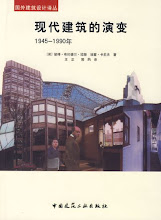




There are many facets to this appreciation of the ethical and accommodating qualities of urban form. Do I want a legible overall structure, convenient for resident and visitor? Do I want the city to allow that when in a given place I might easily find another place? Do I want architecture which has variety and an overall harmony? Do I want the buildings to have a degree of robustness and a degree of permeability, even ambiguity? Do I want them to sustain a variety of uses over time? Do I want them to sustain a variety of uses over time? Do I want them to contain usable public space rather than to repel it? Do I want the building's functions, public or private, governmental or institutional, religious, secular, commercial and charitable, resident and tourist-centred to encourage the casual meeting of different races and classes? Do I want the whole to be made with and ornamented by the highest quality of design, materials, innovative techniques and expressions? Do I want it to contain ritual and social functions with equal grace? Do I want Piazza Santissima Annunziata in Florence? The answer to all these questions is yes. It is, of course, the type of space which Sitte so admired. In its elegant and comprehensible form this space holds in microcosm many aspects of the city as a whole, both this specific city and the generality of cities. The longevity of such space, serene when in use or when abandoned, should also appeal to the desire to create a familiar environment, to develop a sustainable city, and to encourage cooperation and participation.
from URBAN ETHIC link in the sidebar






No comments:
Post a Comment